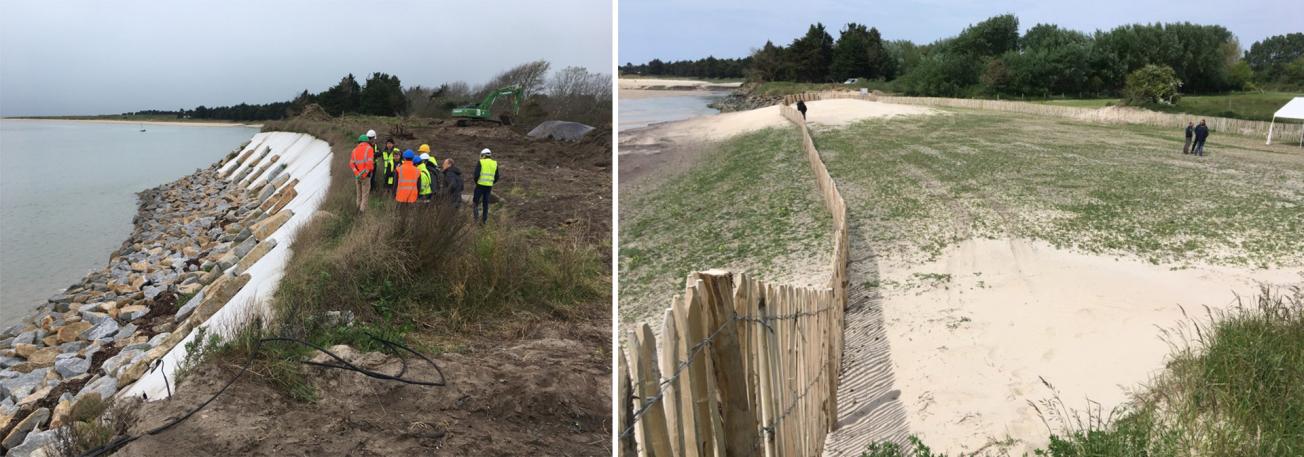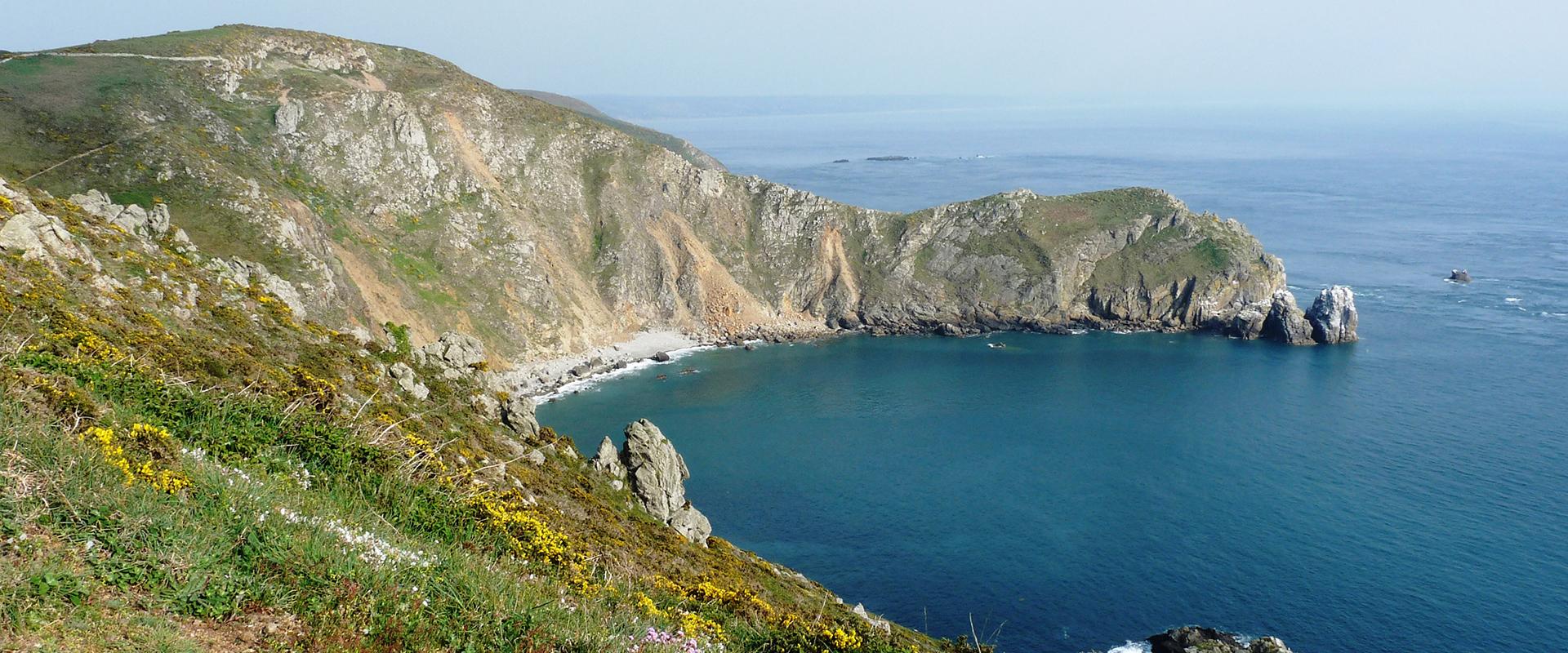
Left: the former Lingreville (Manche) landfill site during works to prevent erosion that was carrying away the waste. Right: the former Lingreville landfill site after rehabilitation (May 2018).
© Geraldine Lebourgeois - La Presse de la Manche
Populated coastal areas around the world have a legacy of numerous old and historic waste disposal sites. Some of these sites are already exposed to coastal hazards and this exposure will increase due to climate change. The average sea level has been rising since the end of the 19th century and this rise is expected to accelerate in the coming decades, increasing flooding and/or erosion.
There is therefore concern that waste disposal sites on and around the coast pose an increasing risk to the environment due to the potential release of liquid and solid waste into the sea and onto beaches.
An international scientific publication based on actual case studies
BRGM researchers have taken part in an international study involving scientists from several countries: the United Kingdom, the Netherlands, Germany, the United States and France. The study has been published in the "Frontiers in Marine Science" journal: Coastal Landfills and Rising Sea Levels: A Challenge for the 21st Century - Coastal Landfills and Rising Sea Levels: a challenge for the 21st century.
The purpose of this article is to assess the current understanding of this complex issue and the need for research by synthesising several real-life situations and case studies. The French case studies were the La Samaritaine coastal landfill (Manche), which was rehabilitated in 2018, and studies and activities that have been in progress for several years around the rehabilitation of the Dollemard landfill in Le Havre.
Identified research needs
This experience shared between several countries has identified the need to better understand the following issues:
- quantity, type and impact of waste that could be released from landfills;
- acceptability and regulation of waste from coastal landfills exposed to flooding and erosion hazards;
- monitoring current and future erosion rates on former landfills and developing appropriate forecasting tools;
- full range of possible methods for managing the treatment of landfill waste and the science to support them;
- appropriate long-term funding mechanisms to address this problem.
International experience shows that in the situations analysed, decisions have been taken either to retain the waste on location and prevent erosion or to remove it and rehabilitate the site. There is a marked lack of strategies for assessing and treating solid waste discharges into the marine/coastal environment, which require a multidisciplinary approach involving coastal engineering, coastal dynamics and the environmental and waste sciences.
Finally, given that solid waste will persist indefinitely and that sea levels will rise for many centuries, the long-term nature of this problem should be taken more broadly into account and included in coastal and waste management policy.
Support for local stakeholders: guidelines are being prepared for the rehabilitation of coastal landfills
In parallel with this international research work and sharing of experience, BRGM is developing guidelines for local authorities, with funding from the Ministry of the Environment, for the rehabilitation of these coastal landfills. The guidelines are expected to be published in 2022.







